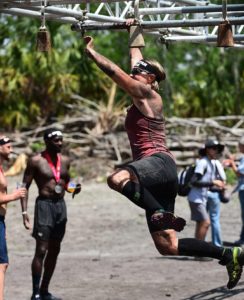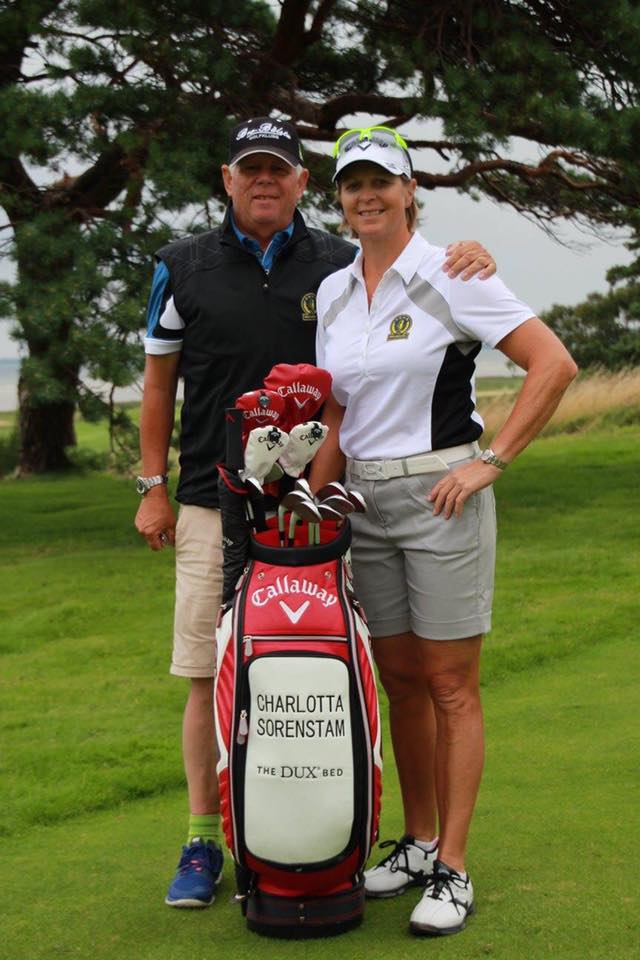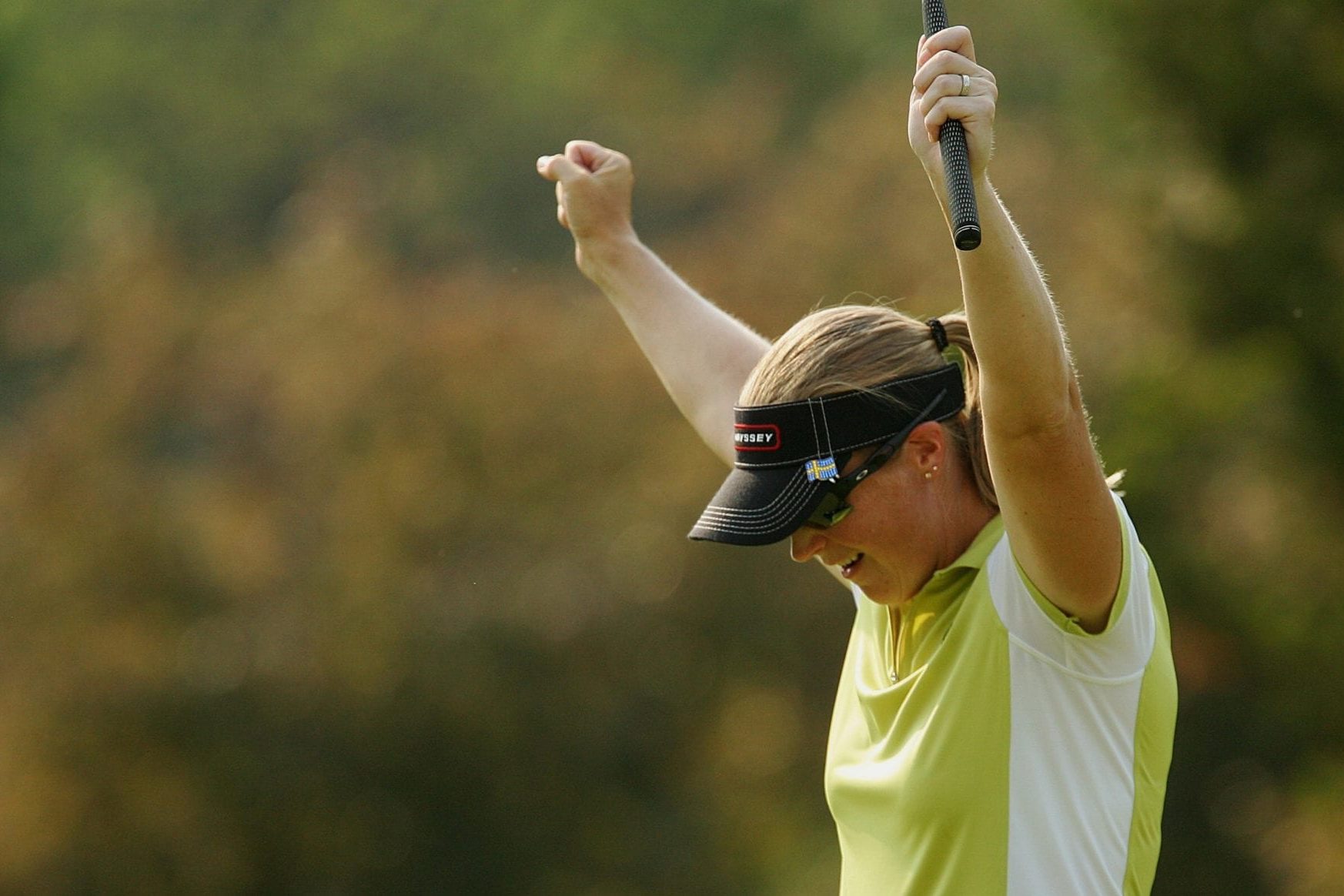Charlotta Sorenstam knew something was wrong in the spring of 2018.
Back pain.
When she played on the LPGA Tour, she never had back issues. Sorenstam suffered from some neck pain, but it was something she learned to deal with. She went through posture training for her swing to make sure back issues were never a problem.
But the pain was there. And there was a lot of it. Sorenstam, who keeps an active lifestyle while teaching at Charlotte Harbor National Golf Club in North Port, Florida, said her floors at home and her work schedule were a combination of culprits.
“Working eight, nine hours a day, six days a week, the last thing you want to do is say ‘Bye! I’m going to go work out!’ so I figured I would have to work out at home,” said Sorenstam. “I definitely think the tile and not a good surface to do a lot of jumping up and down, plyometric things, didn’t help and running also.”

Charlotta was no stranger to competition and pushing her body to the limit. She’s photographed here during the Reebok Spartan Race.
Sorenstam went to a chiropractor and took injections while continuing to exercise. But in early June 2018, she found out her L5-S1, also called the lumbosacral joint, ruptured and was hitting a nerve, weeks before the KPMG Women’s PGA Championship. Sorenstam earned an exemption into the major from an eighth-place finish at the 2017 Teaching & Club Professionals (T&CP) National Championship.
“I talked with the LPGA doctor, Dr. Bruce Thomas, and he helped me with some medication so I would be able to play and get through the pain. Then I pushed it, hoping to release and trying to expand the spine,” said Sorenstam. “I wanted to try every little last thing to avoid surgery.”
The LPGA Tour winner played and missed the cut. By August, she went to Pinehurst No. 8 to compete in the 2018 T&CP National Championship. After the first round, the pain became too significant. She withdrew.
“I see it as a failure. But I couldn’t even go to the bathroom; I was in so much pain. Just crying out in pain. The first round, I shot 4-over and missed three greens. But it was hard to tee up the ball. I could barely pick it out of the hole,” said Sorenstam. “That’s my strength—that I’ve been pushing myself over the years—but in this case, I should’ve just not been so stubborn.”
Two days after leaving Pinehurst, Sorenstam became temporarily paralyzed from the knee down and through her left foot. She couldn’t feel anything.
“I went to the doctor and he said, ‘we’re doing surgery tomorrow,’” she said.
The surgeon gave her two options: a microdiscectomy or spinal fusion. The fusion recovery time was one month versus three, plus rehab, and had a 95% success rate. Sorenstam thought if she could do the spinal fusion surgery by the end of August, she would be ready in time to work the Florida golf season.
But after six weeks, she was still using a cane to walk and could not put any weight on her left leg Sorenstam went back to the surgeon and requested another MRI. When her doctor saw the image, his “jaw dropped”. She needed another surgery. With now a 98% success rate, she went with another spinal fusion surgery.
By November, she felt better and stronger, but the pain required another checkup with a surgeon. She was given the diagnosis: bone on bone. Now she had to decide. A third surgery was not a necessity, but Sorenstam said it was not the quality of life she wanted to live with. She just needed to wait.
“I knew the results in November but decided to wait until April because I needed to work. I wanted to work. I knew I wasn’t going to be able to play anything, plus he said ‘You need someone to take care of you between two and four weeks,’” said Sorenstam. She arranged the surgery closer to her parents’ home in Florida, and in April she pulled the trigger one final time.
Only way back from surgery is getting your body stronger. After 1 hour of rehab time for some cardio. No running for me for a while unfortunately. https://t.co/j6VFgAXiGr
— Charlotta Sorenstam (@Soren73) September 26, 2018
“Fusion—it’s weird. I felt more of the anesthesia than the pain itself. Moving is fine but the skin is sore,” said Sorenstam. “It was weird to be so dependent on friends, but luckily I had a few so they came and helped me, and my mom and dad took care of me.”
With surgeries complete, getting back on the course became the ultimate goal.
“It’s the game. This is part of me, who I am and what I do. Without the golf – at first it was ‘Will I ever walk again?’ and then if I walk, will I ever be playing golf again?’ There was a lot of mental stuff going on,” said Sorenstam.

She was cleared to play on July 10, with the 2019 T&CP National Championship then her next mission.
“I needed this—to be here and not be home, because you feel cooped up,” said Sorenstam.
She ventured to Pinehurst No. 8 for the second consecutive year to compete but had lower expectations for herself.
“I was nervous, because I didn’t know how the body would feel. I was telling myself, ‘Be happy to be here. You’ve come a long way in a few weeks. It doesn’t really matter what you do or how you do, but fight it and try really hard,’” said Sorenstam. “I’m not the person who gives up easily. Even today when I was struggling, I was telling myself, ‘Fight. Fight. Fight.’”
Signing her scorecard after the first round, she was all smiles. “It’s my sixth full round since my last surgery, and I’m in the 70s!” she exclaimed.
Sorenstam made the cut, her first full tournament since her three spinal fusions. She shot 18-over-par, a proud achievement after a year of struggle.
“I’m starting to get the hang of it. There’s a little bit of trust in my swing, trust in my body,” said Sorenstam. “There’s potential.”

Leave A Comment